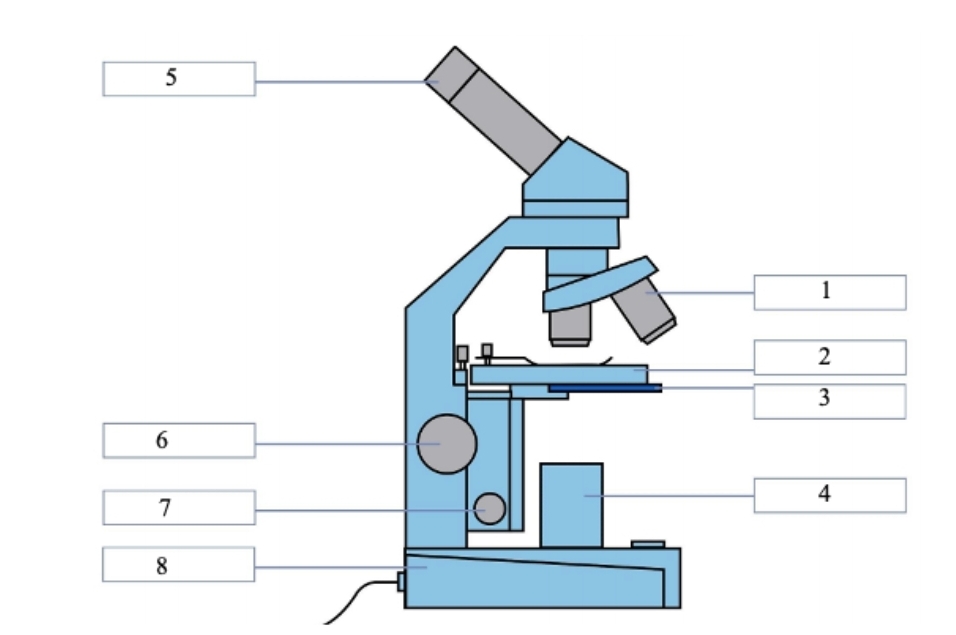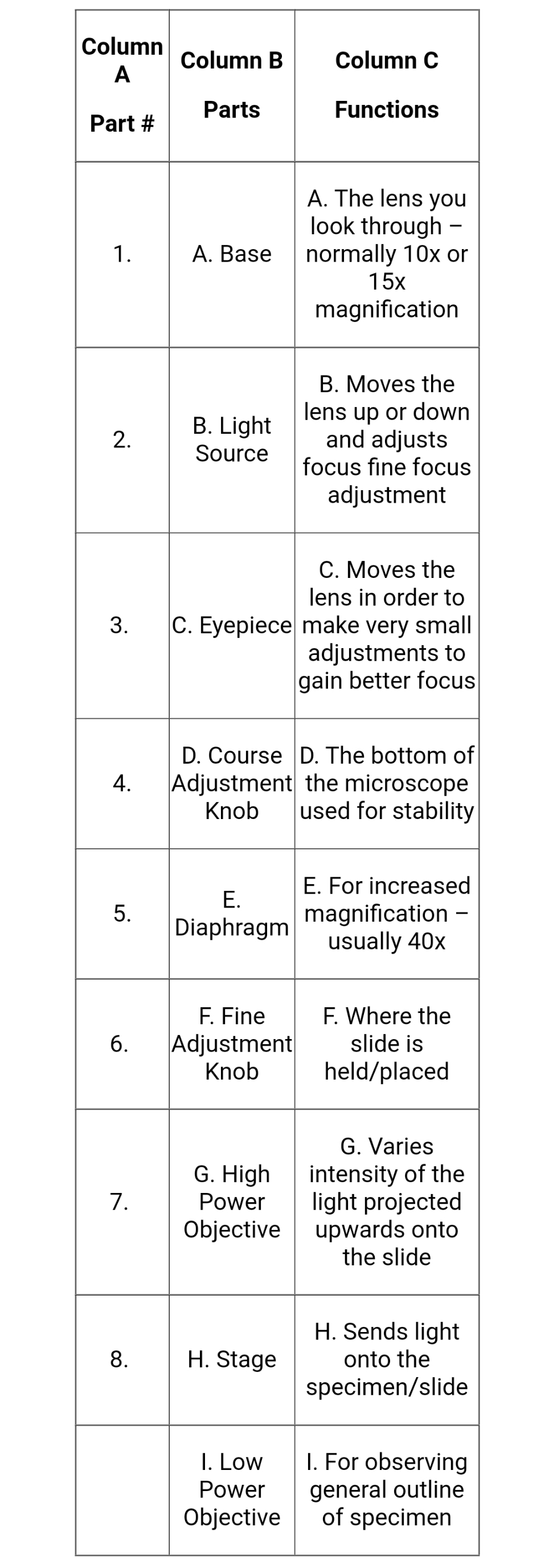Anatomy & Physiology
1st Edition
ISBN:9781938168130
Author:Kelly A. Young, James A. Wise, Peter DeSaix, Dean H. Kruse, Brandon Poe, Eddie Johnson, Jody E. Johnson, Oksana Korol, J. Gordon Betts, Mark Womble
Publisher:Kelly A. Young, James A. Wise, Peter DeSaix, Dean H. Kruse, Brandon Poe, Eddie Johnson, Jody E. Johnson, Oksana Korol, J. Gordon Betts, Mark Womble
Chapter26: Fluid, Electrolyte, And Acid-base Balance
Section: Chapter Questions
Problem 34CTQ: Why is it important for the amount of water intake to equal the amount of water output?
Related questions
Question
100%
PARTS OF THE MICROSCOPE.
Match Column A with Columns B and C. Example: 1). A, C

Transcribed Image Text:5
1
2
6.
4
7
8

Transcribed Image Text:Column
Column B
Column C
A
Parts
Functions
Part #
A. The lens you
look through -
normally 10x or
15x
1.
А. Base
magnification
B. Moves the
lens up or down
and adjusts
focus fine focus
B. Light
Source
adjustment
C. Moves the
lens in order to
C. Eyepiece make very small
adjustments to
gain better focus
D. Course D. The bottom of
Adjustment the microscope
Knob
used for stability
E. For increased
magnification -
usually 40x
Е.
Diaphragm
F. Fine
Adjustment
Knob
F. Where the
slide is
held/placed
G. Varies
intensity of the
light projected
Objective upwards onto
the slide
G. High
7.
Power
H. Sends light
8.
H. Stage
onto the
specimen/slide
I. For observing
general outline
of specimen
I. Low
Power
Objective
2.
3.
4.
5.
6.
Expert Solution
This question has been solved!
Explore an expertly crafted, step-by-step solution for a thorough understanding of key concepts.
This is a popular solution!
Trending now
This is a popular solution!
Step by step
Solved in 2 steps

Knowledge Booster
Learn more about
Need a deep-dive on the concept behind this application? Look no further. Learn more about this topic, biology and related others by exploring similar questions and additional content below.Recommended textbooks for you

Anatomy & Physiology
Biology
ISBN:
9781938168130
Author:
Kelly A. Young, James A. Wise, Peter DeSaix, Dean H. Kruse, Brandon Poe, Eddie Johnson, Jody E. Johnson, Oksana Korol, J. Gordon Betts, Mark Womble
Publisher:
OpenStax College

Essentials of Pharmacology for Health Professions
Nursing
ISBN:
9781305441620
Author:
WOODROW
Publisher:
Cengage


Anatomy & Physiology
Biology
ISBN:
9781938168130
Author:
Kelly A. Young, James A. Wise, Peter DeSaix, Dean H. Kruse, Brandon Poe, Eddie Johnson, Jody E. Johnson, Oksana Korol, J. Gordon Betts, Mark Womble
Publisher:
OpenStax College

Essentials of Pharmacology for Health Professions
Nursing
ISBN:
9781305441620
Author:
WOODROW
Publisher:
Cengage



Human Physiology: From Cells to Systems (MindTap …
Biology
ISBN:
9781285866932
Author:
Lauralee Sherwood
Publisher:
Cengage Learning

Principles Of Radiographic Imaging: An Art And A …
Health & Nutrition
ISBN:
9781337711067
Author:
Richard R. Carlton, Arlene M. Adler, Vesna Balac
Publisher:
Cengage Learning